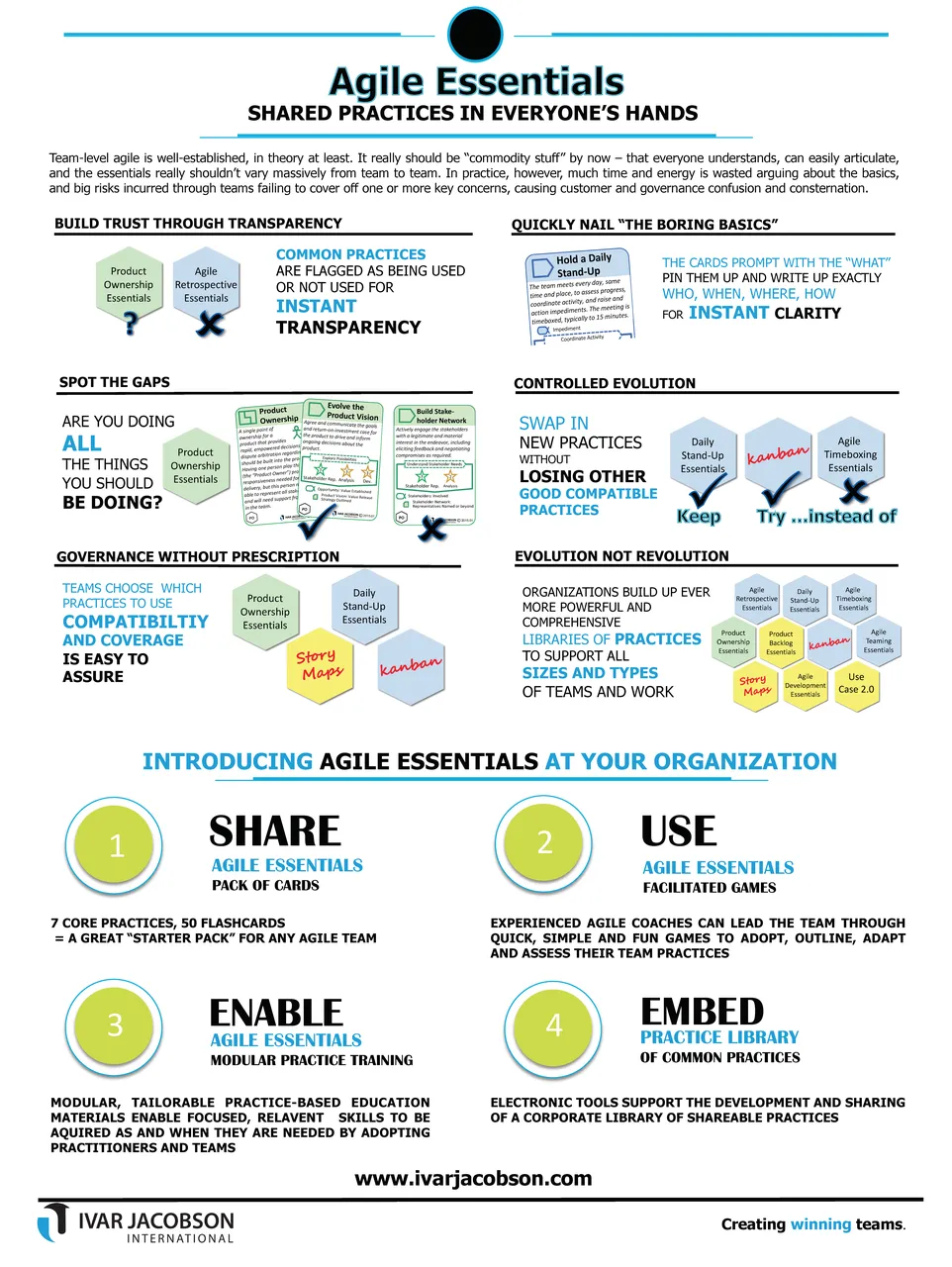These mantras are plentiful and many Agilists believe that success at the team level is the foundation to success at the organizational level. But what does it really mean to work as team and is there a common recipe to build and grow a successful agile team?
Agile believes in principles before practices and in multi-disciplined, self-organizing teams. All teams need direction and guidance, but with an agile approach no one should be telling the team how to do their job. Teams need to be empowered to make choices rather than be told exactly what to do.
But sometimes things can start to unravel and too much time and energy can be wasted arguing about the basics.
You can forget about scaling agile if your team is unable to clearly demonstrate the value of agile at the team level.
But, get the basics right at the team level and engaged, highly motivated, cross-functional teams of teams can follow.
Mastering Agile at the Team Level
The average team hits stumbling blocks when starting.
A common problem for many teams is that high-level, abstract value statements are liable to be interpreted in different ways by different people. Even though everyone may agree in theory to all the principles of agile and nod their heads accordingly, when the heat is on, an agile Scrum Master may have a very different view of healthy and appropriate behaviours and to a traditional Program Manager. These radically different interpretations in practice can and do cause agile projects to derail.
And what happens as you bring on new employees to your team, who have their own strongly-held views of agile, forged from the culture and preferred practices of a very different environment and organization?
Effective team-level agile isn’t something that is achieved overnight, or guaranteed to endure. It takes serious dedication and commitment from all concerned to continue to listen, think, flex, adapt. Experienced agile coaches and facilitators have an important role to play, but there is much that can be done to ensure that the enduring essentials of team-level agile are rapidly agreed and effectively applied.
Nail the Basics!
A clear articulation of the essentials will help ensure everyone is on the same page and help ensure:
- The team can rapidly agree an approach based on a set of clear and simple choices
- Everyone understands how they are working
- You’ve got all the essential bases covered off
- Your stakeholders can see what’s going on which, builds trust and confidence
- As people go and come, you don’t lose momentum
- You can analyze and improve our way of working in a rational and controlled way.
To achieve this, Ivar Jacobson International has created a pack of Agile Essentials cards, which put the essentials for success into the hands of practitioners and teams. The cards include 7 practices that are a starter pack for any agile team. The Agile Essentials cards:
- Put professional practices into the hands of practitioners
- Empower the team to select the right practices for them
- Ensure a cohesive and aligned approach
- Increase visibility, transparency, and governance
- Ensure coverage of all key process risks and concerns
- Enable controlled and continuous process improvement
- Support smooth scaling to achieve ever-greater benefits
As shown in the infographic below, teams can continue to learn and adopt new practices without losing any of the practices that work. In addition, organizations can build libraries that cater for a variety of teams, without causing confusion and upheaval in the workplace.

Give us a call and we’ll be happy to discuss the cards with you or how you can be well on your way to productive team-level agile.
Download the infographic below.

